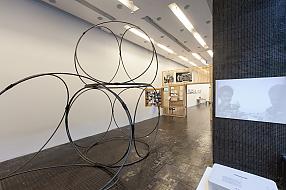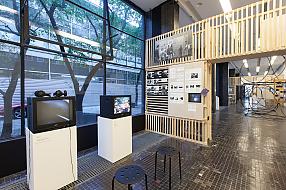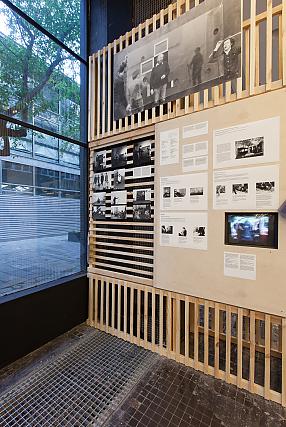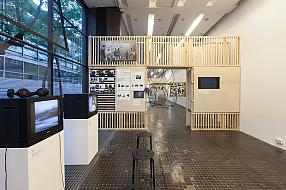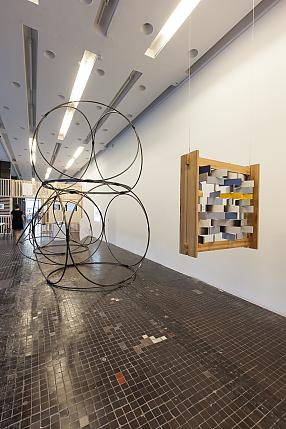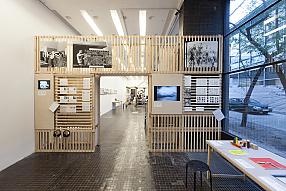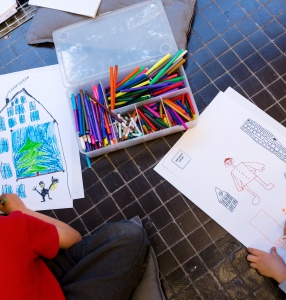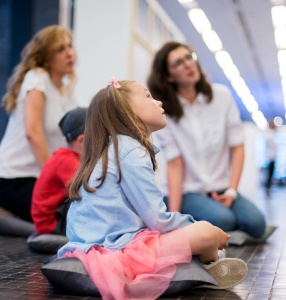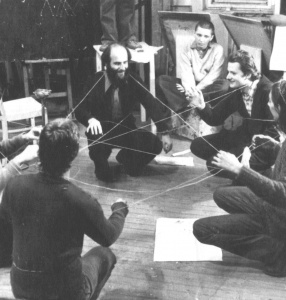Creativity Exercises
Spaces of Emancipatory Pedagogies
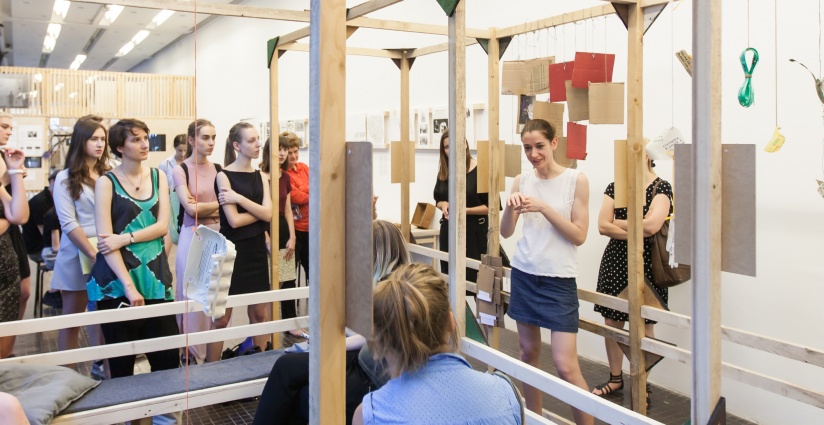
How to break down the routine of the education system in which frontal teaching and data-learning are still the generic formats of gaining knowledge?
Referring to the examples from the visual arts and architecture, the exhibition “Creativity Exercises” demonstrates how open and participatory forms of learning such as different techniques of montage, movement exercises, utopian architectural models, non-verbal communication games, or collective actions can fuel the imagination and contribute to the formation of experimental and democratic communities.
The title of the exhibition was borrowed from Miklós Erdély and Dóra Maurer’s art course held in Budapest between 1975 and 1977. Tracing similar examples of self-organized transdisciplinary study circles of the 1970s and earlier pedagogical experiments connected with the artistic milieus of the Bauhaus, Black Mountain College and the Situationist International, the exhibition discusses the pedagogical potential of art and contributes to contemporary debates on the educational turn in the visual arts, and the industrialization of creativity.
Discussing alternative practices of art education in the context of critical and emancipatory pedagogy, the exhibition defines creativity as a form of agency that is brought to life when the web of relations and roles surrounding the individual is dislodged. It is not a quality, nor an ability to be developed, but an interpersonal agency that enables critical, community-based learning. This does not mean the passive intake of information units, but the (inter)active shaping of personalities and interpersonal relations, the empowerment of groups and individuals, so that they can be critical and responsible social actors.
The architecture of the exhibition, designed by Tamás Kaszás, refers to Robert Filliou and Joachim Pfeufer’s “Poipoidrom,” an architectural installation developed in the 1960s that in its space reflected the consecutive steps of the creative process. One of its chambers, the PoiPoi Cabinet, embraced a plethora of cultural references that could be used to feed further processes of creation. The exhibition, being a PoiPoi Cabinet itself, also treats the presented pedagogical activities as a source of inspiration, offering the audience a possibility to experiment with alternative forms of learning during a series of workshops organized by the museum’s educators.
The exhibition embraces works and references to the oeuvre of such artists, architects and theorists, as: Josef Albers, Imre Bak, Joseph Beuys, George Brecht, Guy Debord, Miklós Erdély, Escuela de Valparaíso, ex-artists collective (Tamás Kaszás- Anikó Loránt), Robert Filliou and Joachim Pfeufer, Paolo Freire, Yona Friedman, R. Buckminster Fuller, Lujza Gecser, Group 143, Oskar Hansen, Hannah Higgins, Ivan Illich, INDIGO Group, Asger Jorn, Paul Klee, Attila Kotányi, Dóra Maurer, Constant Nieuwenhuys, Plágium2000, Alma Siedhoff-Buscher, SIGMA Group, International Parallel Union of Telecommunication (Trustee in bankruptcy: Tamás St.Turba), Raoul Vaneigem, Judit Vas/Ferenc Mérei.
The exhibition is a continuation of a project that was previously presented at the Galerie für Zeitgenössische Kunst in Leipzig (2014) and tranzit.hu in Budapest (2015).
Curators
Dóra Hegyi
Zsuzsa László
Curatorial collaboration
Aleksandra Kędziorek
Franciska Zólyom
Collaboration
Alina Serban
Sándor Hornyik
Misko Suvakovíc
Artpool Art Research Center Budapest
Additional research
Iga Winczakiewicz (Warsaw)
Orsolya Barna (Budapest)
Display design
Tamás Kaszás
Graphic design
Grupa Projektor
Production
Katarzyna Białach
Administration
Mateusz Maleszewski
Technical production
Łukasz Pałuski, Mateusz Wójcik, Szymon Ignatowicz, Artur Jeziorek,
Marek Franczak, Paweł Sobczak, Marcin Szubiak
